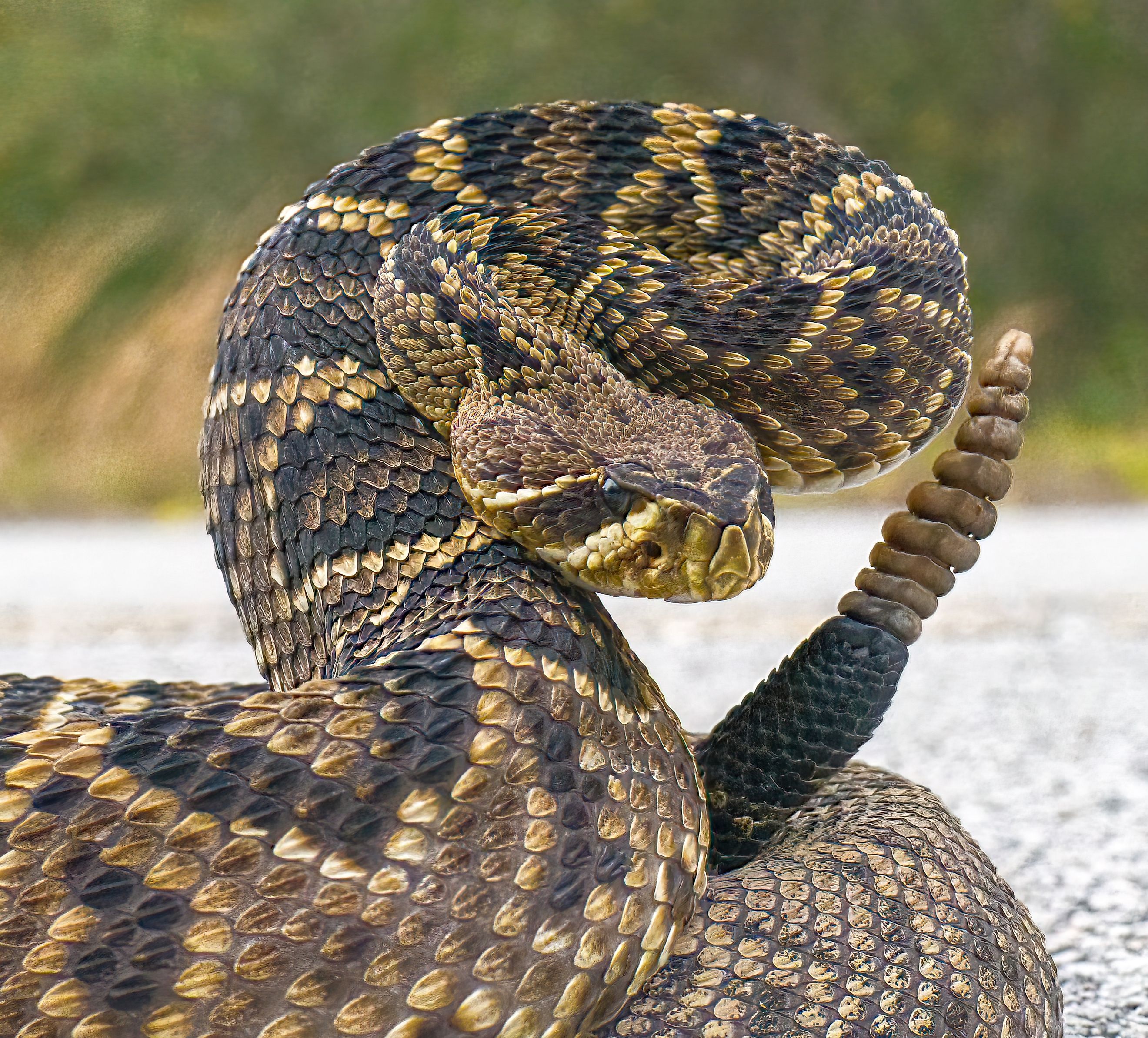
The Venomous Snakes Of South Carolina
South Carolina is an ideal place for a reptile to live, with its vast swamplands, forests, numerous bodies of water within, abundant food sources, and generally warm weather. Because of all these factors, the state is home to numerous species, including snakes of all shapes and sizes. But, only 6 species of snakes that are native to South Carolina are venomous.
Let's take a deeper look at these 6 species, their characteristics, and most importantly, where to find them, so that you may either avoid or seek them out (for you few snake enthusiasts out there) at your will.
Pygmy Rattlesnake
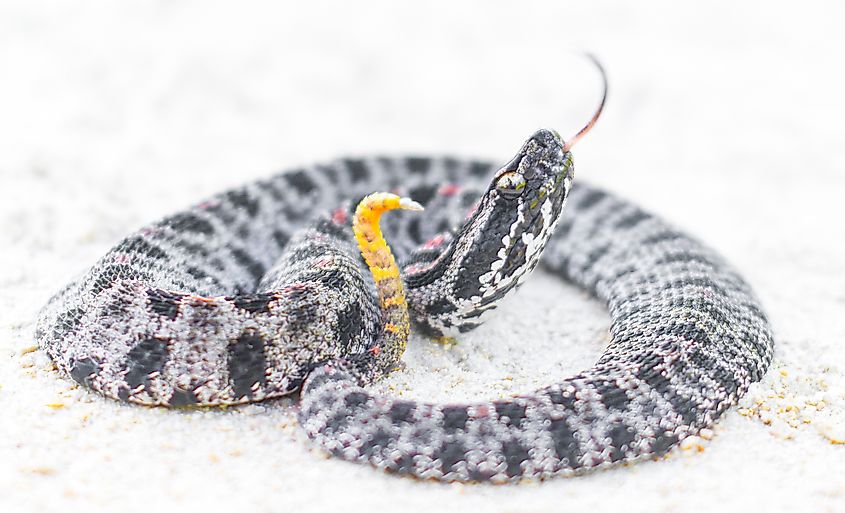
The Pygmy Rattlesnake, native to the southeastern United States, is a small species of pit viper that typically grows to about 16 to 31 inches in length. It features a relatively stout body with a series of dark blotches along its back and sides, and its color varies from gray to reddish-brown, helping it blend into its environment, which comprises almost all woodlands across South Carolina.
This rattlesnake’s rattle is notably tiny and can be hard to hear, giving it its "pygmy" designation. Pygmy rattlesnakes are ambush predators, feeding primarily on small mammals, lizards, and frogs. Although venomous, their bite is rarely fatal to humans, but it can cause painful swelling and requires medical attention.
These snakes are generally non-aggressive and are more likely to retreat when encountered. Despite their small size, pygmy rattlesnakes play a crucial role in controlling pest populations.
Eastern Diamondback Rattlesnake
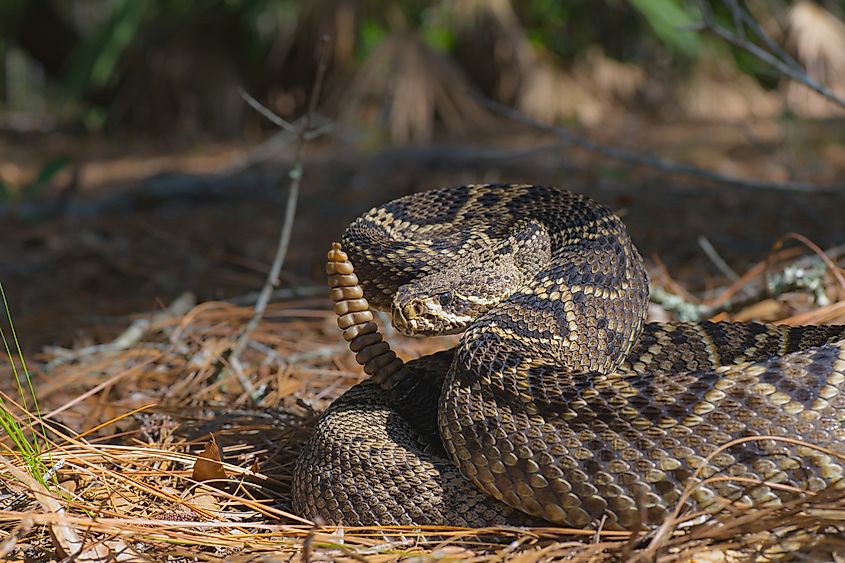
The Eastern Diamondback Rattlesnake is the largest rattlesnake species in North America, reaching up to 8 feet in length! Most are just 3 to 6 feet, however. Recognizable by its distinct diamond-shaped patterns outlined in yellow on a brown or grayish background, it has a heavy body adapted for striking and a large rattle at the end of its tail, used to warn potential threats.
Eastern Diamondbacks are ambush predators, lying in wait to catch small mammals, birds, and occasionally other reptiles. Equipped with potent venom, their bite is potentially fatal to humans, though they typically avoid contact.
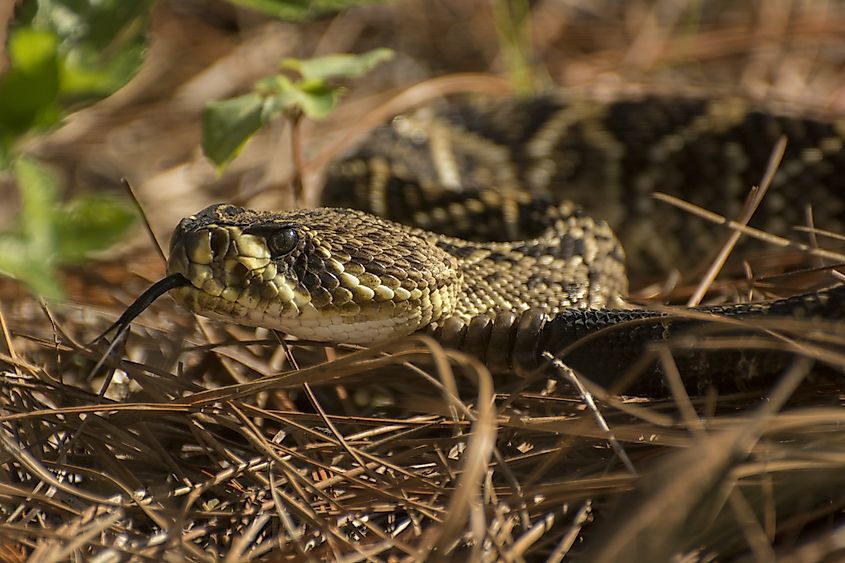
Conservation concerns exist for this rattlesnake due to habitat loss and hunting, making it a protected species in several areas where it contributes to ecological balance by controlling small animal populations. This snake is primarily found in the southeastern United States, inhabiting dry pine forests, coastal dunes, and grassy areas.
Coral Snake
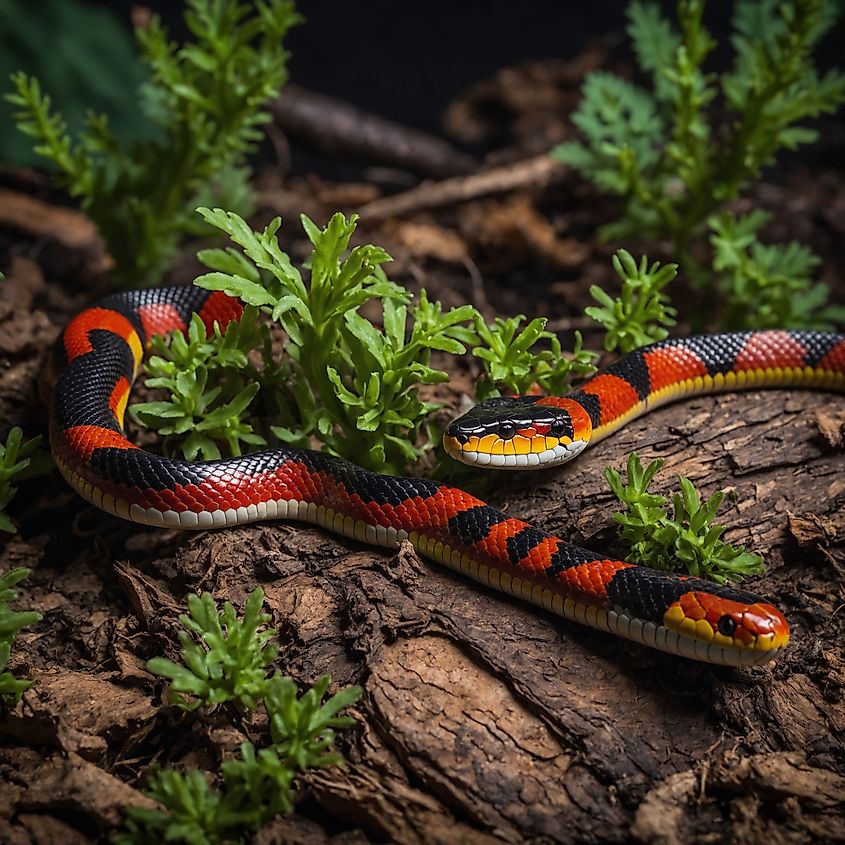
Coral snakes are best known for their unique coloration: bands of red, yellow, and black that signal their venomous nature to potential predators. These small to medium-sized snakes, typically 2 to 3 feet in length, inhabit much of the coastal area of the southeastern United States, with some species also found in parts of the Southwest. Coral snakes prefer habitats like wooded areas, sandy regions, and wetlands, where they can hide under leaf litter and logs. They primarily prey on smaller snakes, lizards, and amphibians.
Unlike pit vipers who have hinged fangs, coral snakes have fixed fangs to inject their neurotoxic venom, which affects the nervous system and can be dangerous to humans. However, bites are rare, as these reclusive snakes generally avoid human contact and are less likely to bite unless provoked.
Cottonmouth Snake
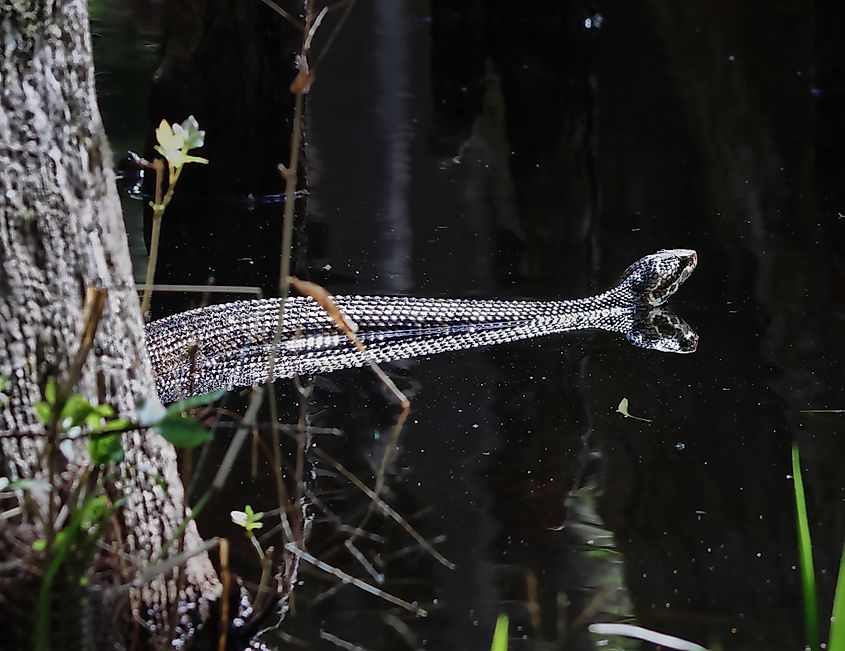
The Cottonmouth snake, also known as the water moccasin, is a semi-aquatic pit viper found primarily in the southeastern United States, including South Carolina's many wetlands and waterways. Known for its distinctive large white mouth, which it displays as a defensive warning, the Cottonmouth is a medium to large snake, typically measuring 2 to 4 feet long. Its coloration ranges from dark brown or black to olive, with younger snakes showing a brighter banded pattern that fades with age.
As mentioned, Cottonmouths inhabit wetlands, rivers, swamps, and ponds, often basking on branches overhanging the water. They are opportunistic feeders, eating fish, amphibians, small mammals, and even carrion.
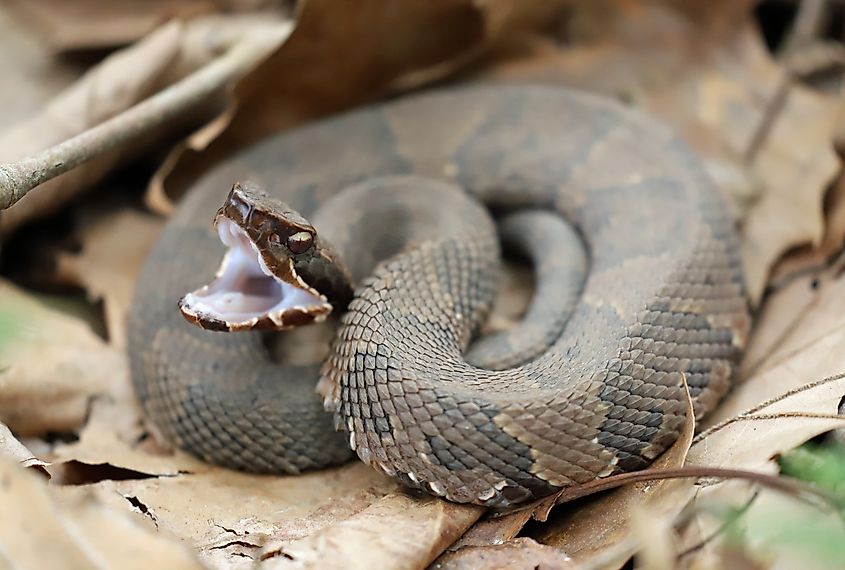
Though venomous, like many other snakes on this list, Cottonmouths rarely bite unless threatened and often prefer to retreat. However, their potent venom, which causes severe tissue damage, makes them a snake to seriously avoid.
Timber Rattlesnake
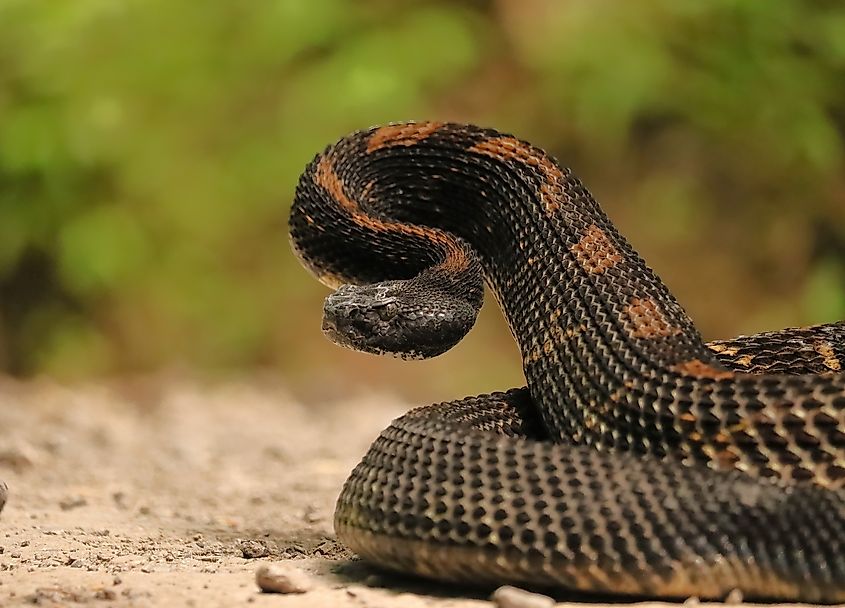
The Timber Rattlesnake can often be found in the forestlands of South Carolina, and much of the Eastern United States as well. Growing up to 5 feet in length, this species has a very distinct color pattern, with a yellow, brown, or gray body marked by dark, jagged crossbands. It also sports a signature rattle at the end of its tail, used to warn off threats.
Timber rattlesnakes can typically be found in deciduous forests, rocky ledges, and mountainous regions like the Appalachians. They mainly feed on small mammals like rodents, as well as birds and other small animals they can capture and swallow.
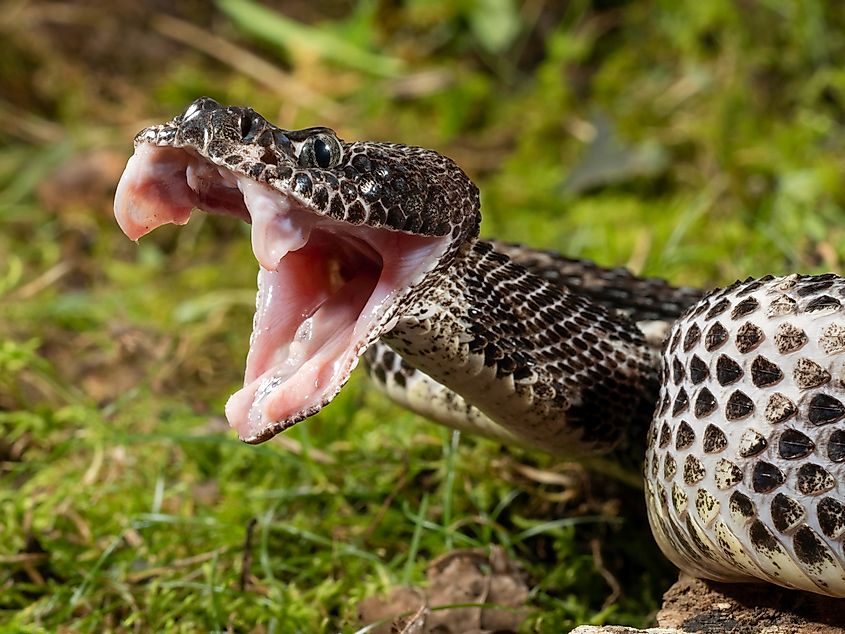
Their venom contains both hemotoxins, which affect blood cells, and neurotoxins, impacting the nervous system, and making it effective in subduing their prey. While they are generally non-aggressive and prefer to avoid human contact, Timber rattlesnakes are protected in many states due to habitat loss and population decline.
Copperhead Snake
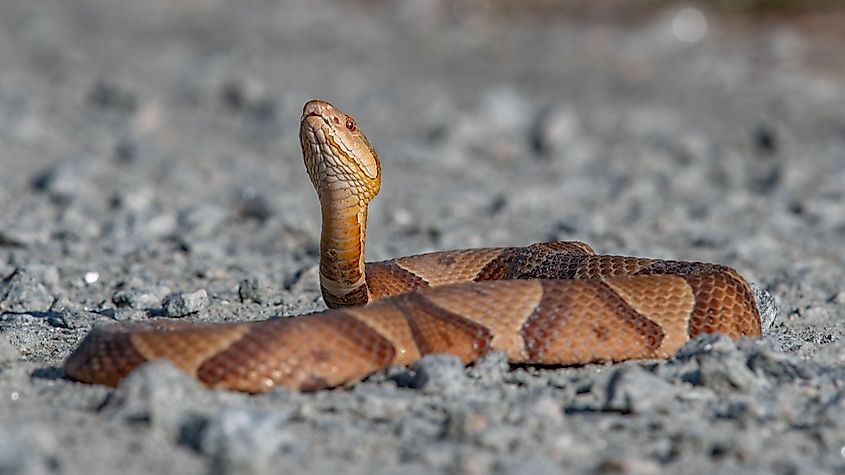
The Copperhead is yet another species of venomous pit viper native to South Carolina. Named for its distinct copper-colored head, this snake usually grows between 2 to 3 feet in length, with the largest found measuring a whopping 6 feet long! Its body displays a pattern of hourglass-shaped bands in shades of tan, copper, and brown, which provide excellent camouflage among leaf litter on the forest floor.
As you can imagine, Copperheads are found in forests, rocky areas, and near water sources like streams and marshes. They hunt small mammals, birds, amphibians, and insects, especially favoring cicadas during their emergence cycles when they're abundant.
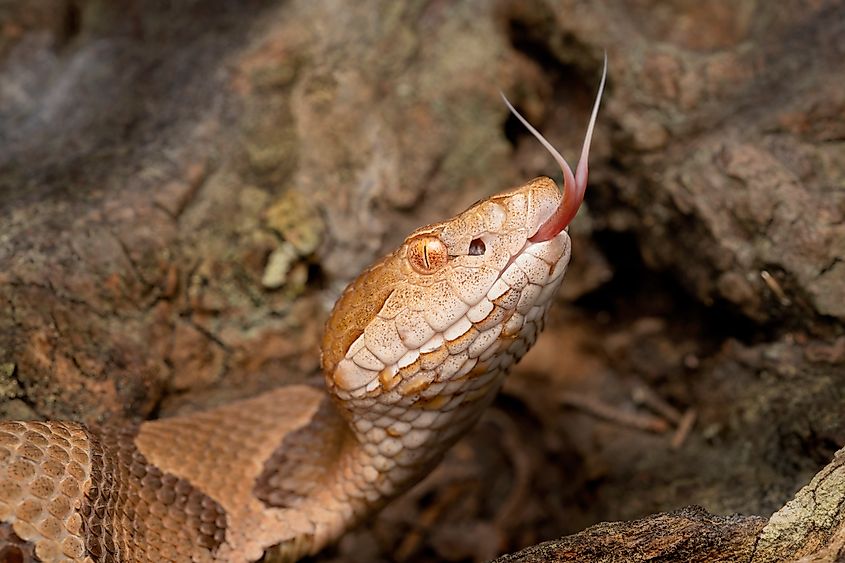
Although venomous, Copperheads are known for their relatively mild venom and generally non-aggressive behavior. Bites are rarely fatal to humans, and these snakes often stay still or rely on camouflage to avoid confrontation.
Know Your Local Snakes in South Carolina
Although many opt to avoid venomous snakes (for good reason), it is still valuable to know and understand the natural environments around you, which are all too often threatened by human interference. Understanding the role these snake species play in maintaining the delicate ecosystem, from keeping small animal populations manageable to being prey to even larger creatures, you can better get a grasp of your place in the animal kingdom.
Do any of the venomous snakes live near you? Further research can highlight local conservation efforts that you may even be able to take part in.











